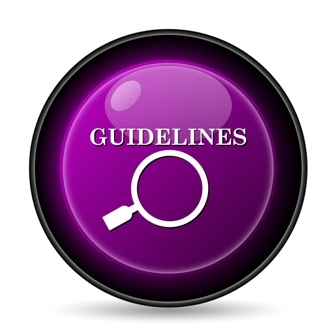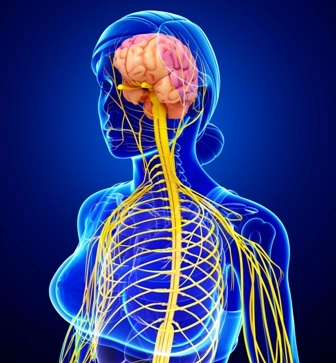Neurology & Pain Management Coding Alert
Get Familiar With New Arthrodesis Bundles
You can report 63047 and +63048 together … but be careful.
As if you didn’t have enough to sort out with coding changes for 2019, the Correct Coding Initiative (CCI) released its edits for the first quarter.
Takeaway: There are some vital updates that you will want to note, especially bundles to some spinal arthrodesis codes.
Check out this advice on following the CCI edits to the letter.
Observe These Rules for Arthrodesis Across Multiple Interspaces
The manual gives you very specific instructions for reporting arthrodesis across multiple interspaces. Take a look at three possible scenarios:
- Scenario 1: The physician performs arthrodesis across multiple interspaces, and he uses the same technique for the same spinal region.
- Scenario 2: The physician performs arthrodesis and the interspaces “span two different spinal regions through the same skin incision.”
- Scenario 3: The physician performs arthrodesis and the interspaces “span two different spinal regions through different skin incisions.”
The rules: For scenarios one and two, you should report the correct primary code for the first interspace and the appropriate add-on code for each additional interspace. For the third scenario, you should report the correct primary code “for the first interspace through each skin incision and an add-on code for each additional interspace through the same skin incision,” according to the manual.
Check Out This Guidance on Multiple Contiguous, Non-Contiguous Interspaces
The manual also specifies how you should report spinal arthrodesis across multiple contiguous and non-contiguous interspaces.
Contiguous: For example, if the physician performs the arthrodesis across multiple contiguous interspaces, and he uses the same skin incision, but he uses different techniques, you should report the appropriate primary code for the first interspace, followed by the appropriate add-on codes for each additional interspace.
Non-contiguous: On the other hand, if the physician performs spinal arthrodesis across multiple non-contiguous interspaces, follow these rules:
- The physician performs arthrodesis across multiple non-contiguous interspaces through the same skin incision, but he uses different techniques. You should report the correct primary code for the first interspace and the appropriate add-on codes for each additional interspace.
- The physician performs arthrodesis across multiple non-contiguous interspaces through different skin incisions, and he uses different techniques. You should report “one primary code for the first interspace through each skin incision.” Then you would report the appropriate “add-on codes for each additional interspace through the same skin incision,” according to the manual.
Take This Advice on 22630-+22634
The correct reporting of laminectomy codes with posterior lumbar interbody fusion codes remains unclear, says Gregory Przybylski, MD, immediate past chairman of neuroscience and director of neurosurgery at the New Jersey Neuroscience Institute, JFK Medical Center in Edison, New Jersey.
While the laminectomy codes are reportable at other interspace levels where a posterior lumbar interbody fusion was not performed when appended with modifier 59 (Distinct procedural service), there have been a number of actions over the past decade between CCI and CPT® Assistant to provide guidance, according to Przybylski.
While CMS considers 63047 (Laminectomy, facetectomy and foraminotomy (unilateral or bilateral with decompression of spinal cord, cauda equina and/or nerve root[s], [eg, spinal or lateral recess stenosis]), single vertebral segment; lumbar) and +63048 (… each additional segment, cervical, thoracic, or lumbar (List separately in addition to code for primary procedure)) inclusive to the posterior lumbar interbody fusion at the same interspace, it was not until the October 2016 CPT® Assistant that CPT® advised the same, Przybylski explains. However, this decision was retracted in a May 2018 CPT® Assistant article.
The professional medical associations who oversee spinal procedures are tasked with developing guidance for correct reporting, Przybylski adds. Stay tuned for further updates.
Related Articles
Neurology & Pain Management Coding Alert
- CCI Edits:
Get Familiar With New Arthrodesis Bundles
You can report 63047 and +63048 together … but be careful. As if you didn’t [...] - E/M Coding:
Use Patient Status Smarts to Determine New/Established
The 3-year rule is vital, but it’s not the only guideline for patient status. There’s [...] - Modifier Madness:
Correctly Use This Trio of Modifiers, Ensure Claim Success
When a claim comes back because of a modifier problem—be it the lack of a [...] - You Be the Coder:
Making a Catheter Code Choice
Question: How should I report a catheter implantation for long-term medication administration? The medication will [...] - Reader Question:
Code Muscle Tests After Counting Body Parts
Question: The PM specialist performs manual muscle testing on three muscles in a patient’s left [...] - Reader Question:
Don't Work Overtime on OT Coding
Question: When one of our providers performs occupational therapy, how should I report the service? [...] - Reader Question:
Trauma Status Matters on Cuff Tear
Question: The provider performs a level-three evaluation and management (E/M) service for an established patient [...] - Reader Question:
Be Sure Combo Codes Are Applicable
Question: Notes indicate that the PM physician performed a short-latency somatosensory evoked potential study in [...]




